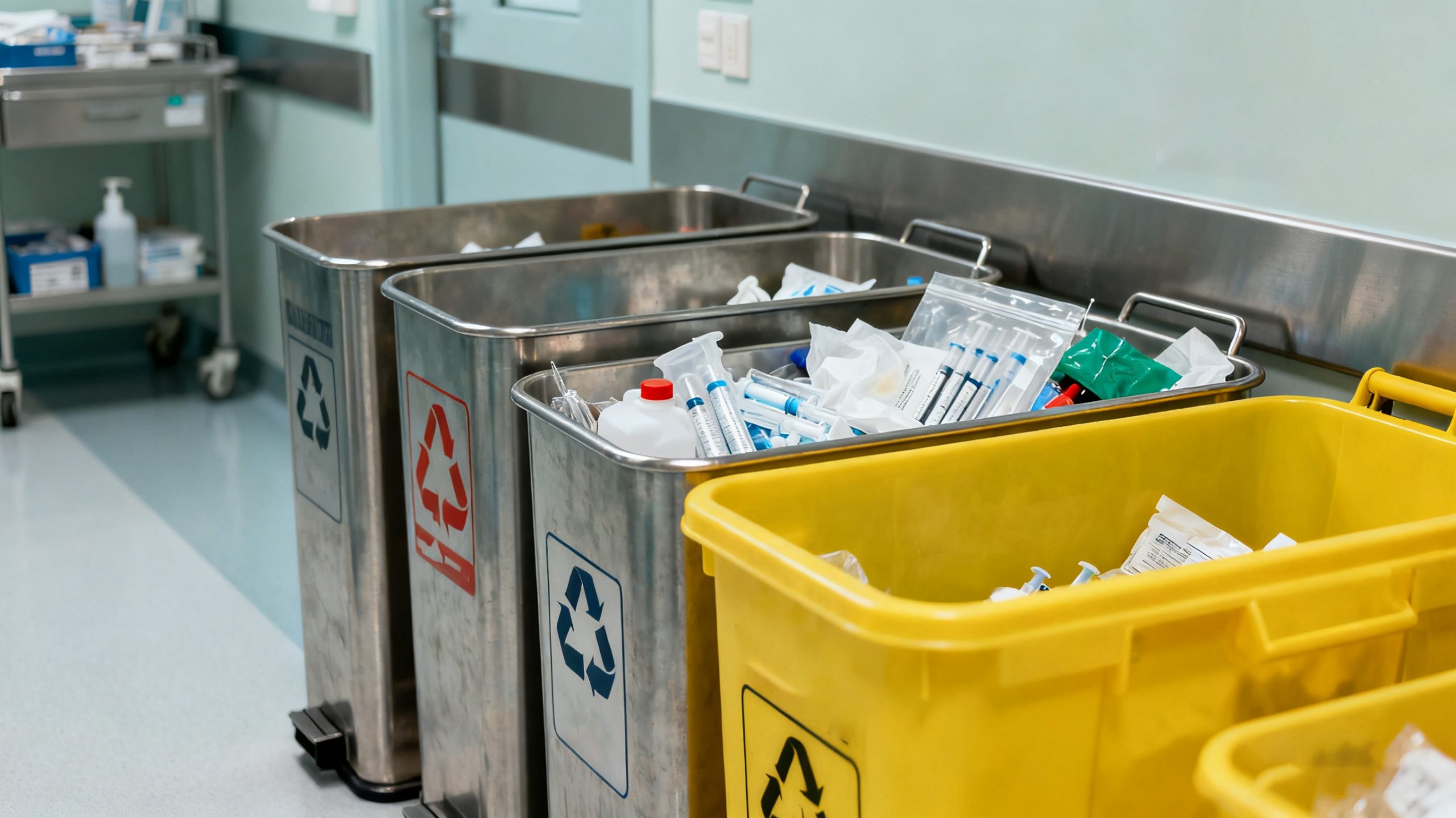
What is Medical Waste?
Medical waste is generated from healthcare facilities and contains potentially harmful microorganisms that can infect hospital patients, health workers and the general public.
——World Health Organization (WHO)
Type of Medical Waste
Infectious Waste: waste known or suspected to contain pathogens and pose a risk of disease transmission, e.g. waste and waste water contaminated with blood and other body fluids, including highly infectious waste such as laboratory cultures and microbiological stocks; and waste including excreta and other materials that have been in contact with patients infected with highly infectious diseases in isolation wards.
Sharps: used or unused sharps, e.g. hypodermic, intravenous or other needles; auto-disable syringes; syringes with attached needles; infusion sets; scalpels; pipettes; knives; blades; broken glass;Pathological Waste: human tissues, organs or fluids, body parts, foetuses, unused blood products and contaminated animal carcasses;
Chemical Waste: Solvents and reagents, disinfectants, sterilant, etc.
Pharmaceutical Waste: pharmaceuticals that are expired or no longer needed; items contaminated by, or containing, pharmaceuticals. Cytotoxic waste containing substances with genotoxic properties, e.g. waste containing cytostatic drugs (often used in cancer therapy); genotoxic chemicals
Hazards of Medical Waste
- Infection Risks
Pathogen Transmission:Improper handling can lead to needlestick injuries or direct contact, posing severe health risks to healthcare workers, waste handlers, and the public.
Epidemic Spread:During outbreaks (e.g., COVID-19, Ebola), mismanaged medical waste can amplify disease transmission in communities.
- Environmental Pollution
Soil and Water Contamination:Chemicals and pharmaceuticals leaching into soil/groundwater disrupt ecosystems and enter the food chain.
Air PollutionOpen burning or inefficient incineration releases toxic fumes (e.g., dioxins, furans) linked to cancer, respiratory diseases, and climate change.
- Public Health Crises
Communities near poorly managed waste sites face higher rates of infections, chronic diseases, and reduced quality of life.
WHO Statistics
According to WHO/UNICEF, in 2021, only 61% of hospitals had basic health-care waste services. The situation is far worse in fragile contexts, where based on 2023 data, only 25% of health facilities had basic health care waste management services.
